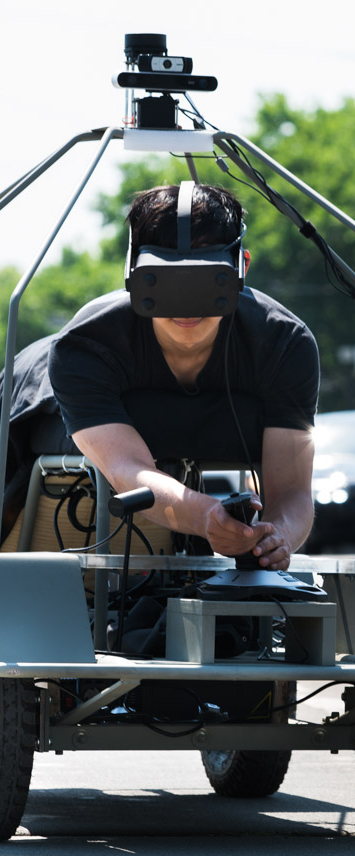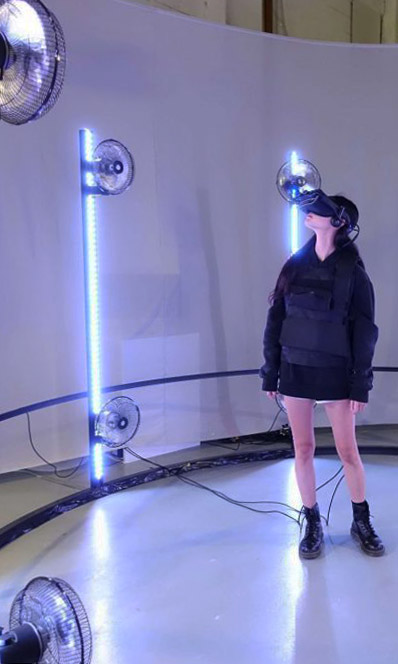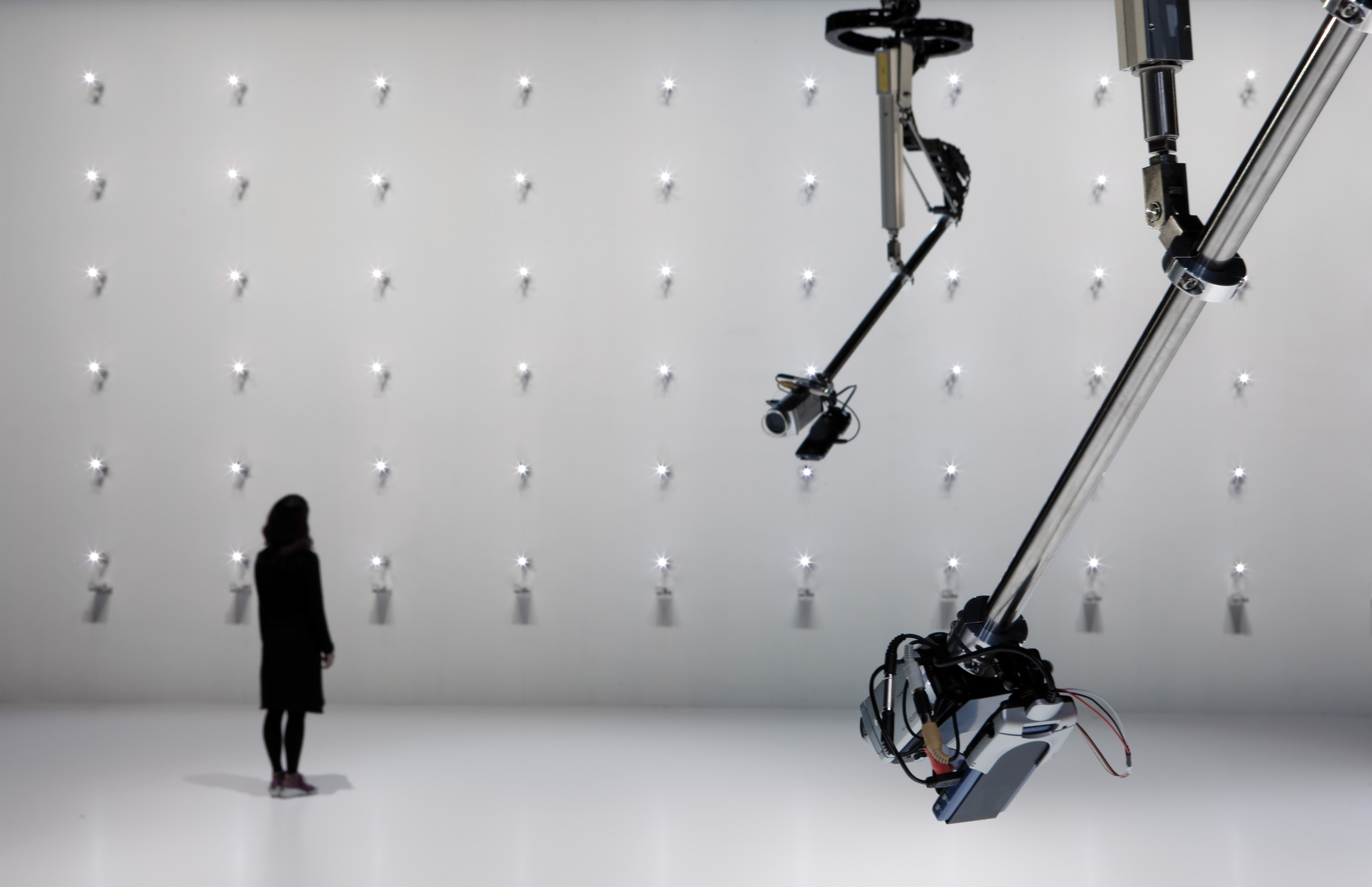
Move Lab
Who Wants To Be A Self Driving Car?
The moovel lab collaborated with MESO Digital Interiors to prototype this immersive experience. The idea was to make a machine that replaces the human senses with the sensors that a self-driving car might use. Our unconventional driving machine is essentially a steel-frame buggy with in-wheel, electric motors, complete with hydraulic breaking. Drivers lay head first on the vehicle; the positioning used to enhance the feeling of immersion (and vulnerability) created during the experience. A physical steering wheel controls the turning of the vehicle.The VR experience is created using data collected by the sensors outfitted on the driving machine.






